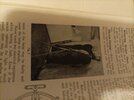Fair enough, but one doesn't necessarily have that degree of certainty about 'switch positions' in many a property!On those rare occasions when I decide it really does need to be isolated, then I arranged all switches, up for off. Two ways, if both are up, it is off, ...
An irony there is that, should, for whatever reason, the lampholder remain ';live;, despite one's attempts to isolate it, then that ;'testing' probably exposes one to as much theoretical risk as would simply changing the bulb/.lamp... and I will test and check it is off, before proceeding - I don't like surprises.
One cannot knock that as essentially foolproof advice but, as I've said, I seriously doubt that many people (of whatever degree of 'confidence') ever do it!So the advice is - unless you are absolutely confident of your abilities, then isolate the circuit..



